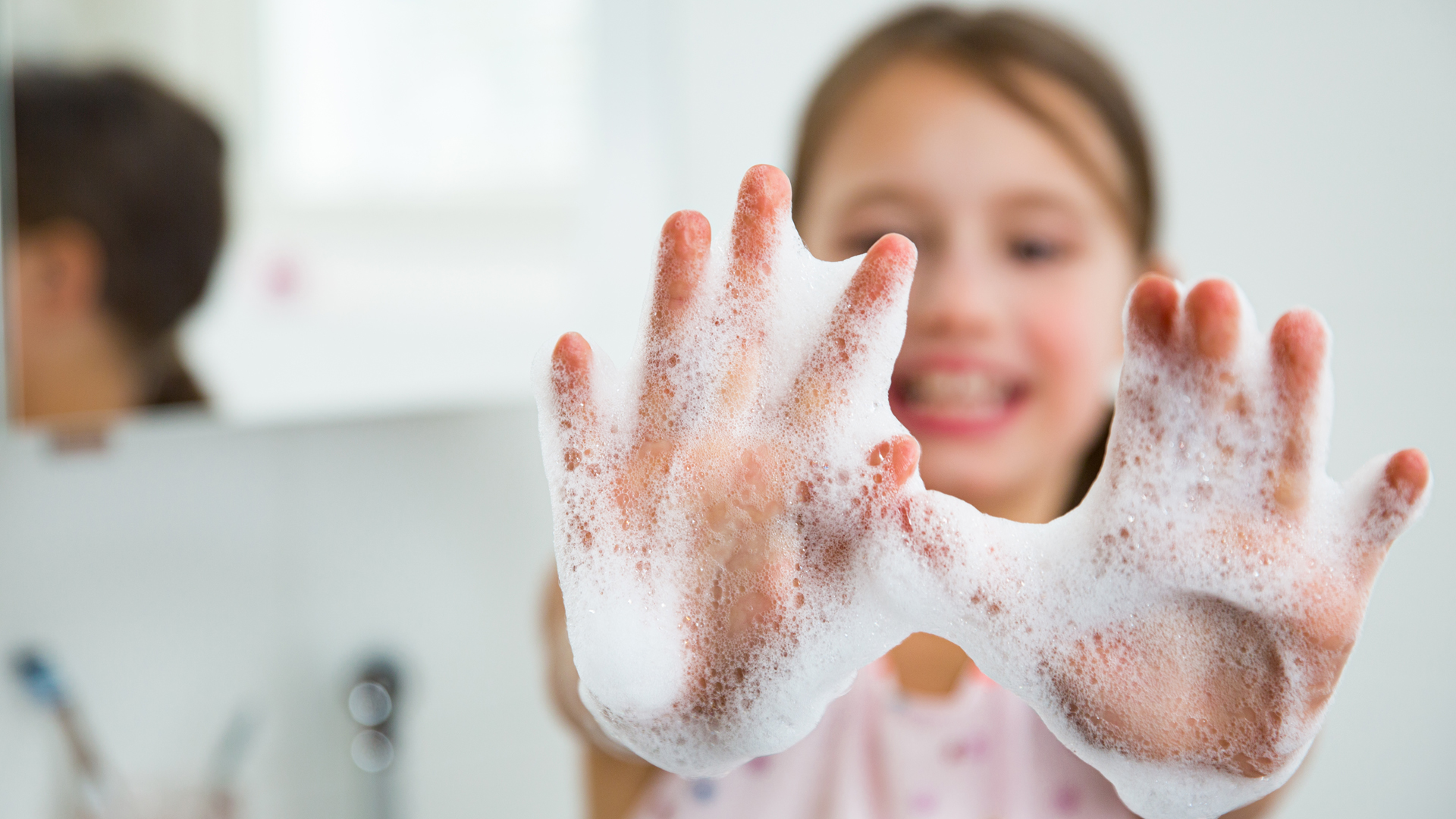
Health Europa speaks with COPE Initiative Project Lead Mark Czeisler about demographic trends in hand hygiene and its significance in infection control.
Mark Czeisler, interview by Rosemary Lobley
Hand hygiene is a key aspect of infection prevention and control: the World Health Organization’s (WHO) ‘Save lives: clean your hands’ campaign states: ‘Hand hygiene is one of the most effective actions you can take to reduce the spread of pathogens and prevent infections, including the COVID-19 virus. Community members can play a critical role in fighting COVID-19 by adopting frequent hand hygiene as part of their day-to-day practices,’ noting that ‘Everyone has a role in supporting healthcare workers in hand hygiene best practices at this critical time.’
The US Centers for Disease Control and Prevention (CDC) has highlighted the role of hand hygiene in preventing the spread of infection, saying: ‘Hand hygiene helps stop the spread of germs, including ones that can cause antibiotic-resistant infections. Antibiotic resistance happens when germs like bacteria and fungi develop the ability to defeat the drugs designed to kill them. That means the germs are not killed and continue to grow. Infections caused by antibiotic-resistant germs are difficult, and sometimes impossible, to treat. Keeping your hands clean by washing your hands with soap and water or using alcohol-based hand sanitiser is one of the best ways to prevent germs from spreading and avoid infections.’
The COVID-19 pandemic has thrown a spotlight onto the role of community behaviour in alleviating the spread and impact of infection and disease. While the WHO has been actively engaged in promoting appropriate hand hygiene protocols around the world since 2009, until the advent of COVID-19 its campaigns had focused primarily on augmenting infection control efforts in low- and middle-income countries (LMICs).
The British Psychological Society’s (BPS) Behavioural Science and Disease Prevention Taskforce has identified the following key aspects of successful hand hygiene campaigns:
- Teaching the audience when, how and for how long to clean their hands, communicating instructions clearly and using evidence-based guidance;
- Offering opportunities to engage and collaborate with people and organisations;
- Promoting the campaign to the wider community by working within and alongside that community;
- Encouraging and demonstrating prompt action to support the campaign; and
- Providing individual support to assist people in the planning and preparation of their handwashing facilities and protocols; and
- Promoting clarity and consistency of messaging across all infection control strategies.
The taskforce highlights the importance of targeting messaging towards the intended audience, taking into account factors such as age, occupation, cultural background and levels of risk, as well as the potential factor that handwashing facilities may not be easily and immediately accessible to all users. Its guidelines note that employers and operators of public spaces should ‘make handwashing easy’; and should not assume that everyone carries or uses hand sanitiser, or that everyone has easy access to or full awareness of the most effective facilities or methods to wash and dry their hands when in public.
The COVID-19 Outbreak Public Evaluation (COPE) Initiative was established with the dual aims of recording and analysing the attitudes, behaviours and beliefs of the public pertaining to the COVID-19 pandemic; and assessing the impact of the pandemic on people’s mental and behavioural health. In 2020, the initiative published a research paper titled ‘Demographic characteristics, experiences, and beliefs associated with hand hygiene among adults during the COVID-19 pandemic’, which surveyed the handwashing and hygiene behaviours of 4,817 US adults.
The report’s authors highlighted the role of hand hygiene as a single vector in holistic infection prevention within communities, saying: ‘Hand hygiene is part of a multicomponent public health approach, which also includes wearing face masks and maintaining a physical distance of six feet or more from others, among additional prevention measures, to prevent and control COVID-19 in community settings. Public health promotional outreach about hand hygiene is needed, given that these findings indicate that hand hygiene adherence could be improved, especially among certain groups. Hand hygiene-related health promotion strategies should be tailored towards men and young adults. To motivate hand hygiene behaviour, health promotion messaging could focus on addressing risk perceptions of COVID-19, which might have shared benefits to promote engagement in additional COVID-19 prevention measures. Finally, increasing visibility and accessibility of handwashing and hand sanitising signage and materials in public settings could encourage and facilitate hand hygiene to prevent the spread of COVID-19.’

What role does hand hygiene play in the prevention and control of infection, particularly during a global pandemic? What is the optimum hand hygiene routine?
Germs spread from other people or surfaces in many ways, including when people:
- Touch their eyes, noses, and mouths, with unwashed hands;
- Prepare and eat food or drinks;
- Touch contaminated surfaces;
- Blow their noses, cough, or sneeze into their hands; or
- Touch other peoples’ hands or common objects.
Hand hygiene can play a critical role in the prevention of respiratory infection, including by the coronavirus. Hand hygiene is part of a multicomponent bundle – which also includes measures such as mask usage and physical distancing – to protect against community transmission of coronavirus.
In order to prevent the spread of germs during the COVID-19 pandemic, the best strategy is to wash your hands with soap and water for at least 20 seconds (or use hand sanitiser when soap or running water are not readily available) both before and after any of the following:
- Touching your eyes, nose, or mouth;
- Touching your mask;
- Entering and leaving a public place; or
- Touching an item or surface which may be frequently touched by other people, such as door handles, tables, gas pumps, shopping carts, or electronic cashier registers/screens.
To wash your hands, follow these five steps:
1) Wet your hands with clean, running water (warm or cold), turn off the tap, and apply soap.
2) Lather your hands by rubbing them together with the soap. Lather the backs of your hands, between your fingers, and under your nails.
3) Scrub your hands for at least 20 seconds. If you need a timer, hum the ‘Happy Birthday’ song from beginning to end twice.
4) Rinse your hands well under clean, running water.
5) Dry your hands using a clean towel or air dry them.
More information is available at www.cdc.gov/handwashing/when-how-handwashing.html.

What were the key findings of your ‘Demographic characteristics, experiences, and beliefs associated with hand hygiene among adults during the COVID-19 pandemic’ study? How could they be useful in developing local and national measures to combat COVID-19?
Approximately 85% of US adults reported performing frequent hand hygiene actions following contact with public surfaces, such as shopping carts, gas pumps, and ATMs. While these findings are encouraging, there were demographic differences; with men, younger adults, respondents with lower concern about risk for SARS-CoV-2 infection, and respondents without personal experience of COVID-19 reporting less frequent hand hygiene.
These findings may be used to best inform resource allocation for hand-hygiene-related health promotion strategies during the COVID-19 pandemic, including through focusing on men, younger adults, and those with low personal risk perception. Moreover, the findings point to some potential barriers to accessing hand sanitiser, outlined below.
What external factors might affect differences between demographics in approaches to hand hygiene?
Education about when and how to practice hand hygiene, along with access to the materials required, are external factors that may contribute to demographic differences in approaches to hand hygiene. This is part of the reason why we specifically highlighted the following in the ‘Discussion’ section of our report:
“Respondents with lower income reported less frequent hand sanitising. This could reflect lack of access to hand sanitiser; higher income and access to handwashing infrastructure have been previously found to be associated with adherence to hand hygiene. Difficulty obtaining hand sanitiser has been documented during the COVID-19 pandemic and purchasing hand sanitiser might be prohibitive for people with low incomes, particularly given recent reported increases in cost. Strategies to increase hand sanitising among lower-income populations could apply innovative approaches with regards to the location of signage and contactless dispensers (eg the centre of a lobby or market or next to or built into gas filling stations) to make hand sanitiser and handwashing materials visible and readily available in public settings and address disparities in access.”
Should public messaging around COVID-19 and infection control emphasise more clearly the importance of hand hygiene?
Hand hygiene is a valuable part of the tools that we have to combat the COVID-19 pandemic. We should be taking advantage of every tool we have, as doing so will both reduce morbidity and mortality related to COVID-19 and accelerate our emergence on the other side of this once-in-a-century pandemic.
Mark Czeisler
Project Lead
The COPE Initiative
www.thecopeinitiative.org
This article is from issue 16 of Health Europa. Click here to get your free subscription today.










